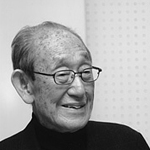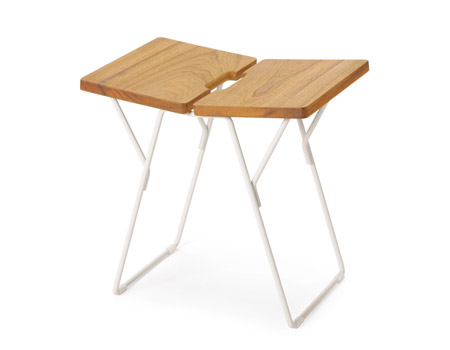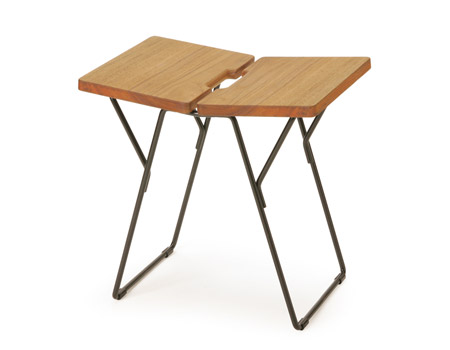Solid Stool
design Riki Watanabe [1954]
- [Price]
- Oak JPY32,000
Teak JPY35,000 - [Size]
- W.430 D.300 H.420mm
- [Weight]
- 3.5kg
- [Material]
- Leg / steel rod (Daim. 10mm)
Seat / Solid wood (Thickness 20mm) - [Brand]
- METROCS (made in Japan)
The Solid Stool was first designed in 1954 for residential use in a house planned by Kiyoshi Seike. The structure of the stool reminds Torii Stool which is a representative work of Riki Watanabe, and its rectilinear and neat form is composed by the combination of the solid wood seat and the steel rod legs. There is Watanabe's great care in detail such as the angle of the seat which is easy to sit and the handle hole on the seat for carrying. This is a masterpiece which revived in 2005 with METROCS, after half a century from its first release.
About Material
As the products are made of natural wood, there are individual differences in the grain pattern.

-
Riki Watanabe
After having graduated from the Woodcraft Department at Tokyo Higher School of Arts and Design (nowadays: Chiba University), he joined Gunma Prefecture Industrial Arts Center where Bruno Taut was working in 1936. In 1949, Watanabe established his own designing studio. He got famous by the low-cost String Chair in 1952. Watanabe's Torii Stool and Circular Center Table won the Gold Medal at Triennale di Milano in 1957. Besides interior and furniture design, Watanabe has also designed clocks and watches. His 1972 design, Hibiya Dai-Ichi Life Insurance Company's pole clock is defined as one of Watanabe's major works. Watanabe is considered to be one of the pioneers of after-war Japanese design.








